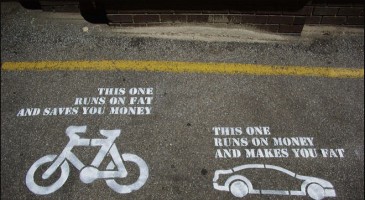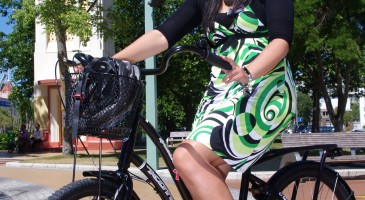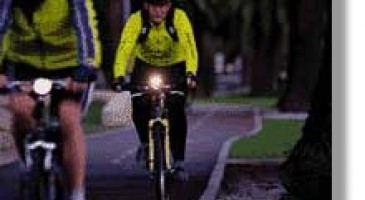From Paul Bruce:A Strategic walking and cycling improvement packageis up for consultation within the draft Hutt Corridor Plan which can be accessed via http://www.gw.govt.nz/draft-hutt-corridor-plan-201/ or more directly at Full Draft Hutt Corridor Plan 2011Submissions close on Wed 15 June.The off-road cycleway/walkway between Ngauranga and Petone is part of this.Please make submissions calling for a full detailed investigation during the next financial year 2011/12 (beginning June). This is an urgent project as there are serious safety concerns, and there are significant economic benefits with a BCR ranging from 3 up to 9 depending on how the figures are calculated. Public participants at the most recent RTC meeting called for an acceleration of this timetable. No changes were made to the draft timetable. Now is your chance to submit again.The present indicative project timing can...
News: April 2011
Apr
Apr
Please find attached a document on the proposed direction for the next Government Policy Statement on Land Transport Funding, and a covering letter inviting you to submit your views on the proposed direction.
Apr
Government poised to increase state highway spending; Transport Minister on budget prioritiesIncludes comments from Greens, Road Transport Forum, Roading NZ, CAN (Patrick Morgan), and an interview with Steven Joyce."Especially where money is scarce, investment in cycling is the best way to reduce road congestion and boost prosperity.With a million and a half people riding bikes in NZ, there's massive demand for quality cycleways, especially in our cities. And every person on a bike creates more road space for essential freight movements." - CANhttp://www.radionz.co.nz/national/programmes/morningreport/audio/2488035...
Apr
Bike Futures Seminar Lifting cycling to the next level - lessons from Melbourne and PortlandFriday 15 April 2011, 9am - 4pm, Auckland The Auckland Bike Futures Seminar focused on the latest thinking and major issues confronting communities as we move to embrace the bicycle revolution.A key messageDon't sell biking. Find out what the Council wants and sell that e.g. prosperity, quality of life, tourism, resilience, health, low debt.What should be the priorities for our Councils?Spending - at least $5 per resident per year.End of trip facilities e.g. secure parking, lockers.Focus on the last 100 metres.Base plans on evidence and a clear strategic direction.1. Harry Barber, CEO, Bicycle VictoriaIt's not about the bike.It's about mobility, road space, money, health, lowering energy intensity in a low-carbon world.As oil prices rise, keep $ in your city....

Apr
Bicycle transportation is good for a lot of things-it's healthy, it's green, it's quiet, it's fun, it builds community. It also makes financial sense, and the magnitude of bicycling's economic impact gets far less attention than it deserves. In the Bikenomics series, Elly Blue explores the scope of that impact, from personal finance to local economies to the big picture of the national budget. In the grassroots and on a policy level, the bicycle is emerging as an effective engine of economic recovery.Includes: How bicycling will save the economy (if we let it) Tearing down urban freeways to make room for a new bicycle economy Pedaling away from the health care crisis The economic case for on-street bike parking How the bicycle economy can help us beat the energy crisissource: http://www.grist.org/article/series/bikenomics

Apr
Cycling Advocates Network manager Patrick Morgan will travel to Europe in September to study best-practice cycle training programmes. The study trip is partly funded by a Winston Churchill Fellowship.Report: It's as easy as riding a bikeMr Morgan says cycling skills can be acquired informally or taught in training programmes."Cycle skills are basic life skills which everyone should have, much like swimming and literacy."Learning how to ride properly makes cycling more enjoyable and safer for children, adults and other road users, he says."Some cyclists have bad habits such as running red lights or riding too close to parked cars. With good training we can reduce unsafe behaviour.""Cycle skills training is an excellent way to get more people on bikes, more often."In Europe Mr Morgan will seek knowledge, contacts and experience to further raise the standard of CAN's cycle...
Apr
A world expert on road diets, Dan Burden begins this chapter of Moving Beyond the Automobile saying, "a road diet is anytime you take any lane out of a road". Of course the knee-jerk reaction is likely to be along the lines of, "How can removing lanes improve my neighbourhood and not cause traffic backups?" But in nearly every case, the opposite is true.Every road user benefits when road diets go in.They're good for drivers: making roadways safer, more efficient, and providing turning lanes so through traffic can proceed without waiting. They're good for cyclists: a significant percentage of road diets identify enough room to include bike lanes and make cars more predictable on the road. They're good for pedestrians: fewer lanes of traffic to cross means less chaos and some road diets install either centre waiting islands at the corners. Perhaps most important: road diets are cheap,...

Apr
"Today, bicycles continue to provide mobility and freedom to many people in the U.S. who don't have driver's licenses, don't own a car, don't have access to public transit, or simply don't want to drive. President Obama understands that.And when cycling advocates see me exhibiting my enthusiasm for more bicycling and pedestrian options, it's out of this Administration's desire to give people more flexible, convenient, andaffordable options when it comes to getting around.Now, the transportation budget President Obama proposed to Congress is a big, bold vision for the next generation of American transportation. And walkable, bikeable, liveable communities are a central part of that vision. The President's 2012 budget would boost funding for pedestrian and bike-friendly communities to $4.1 billion. And the Administration would like to see these essential resources included in the next six...
Apr
Check topics for discussion - CAW rep is Craig Lucena
Apr
WCC are calling for submissions on the Draft 2011/12 Annual Plan - you can look at a summary, or the most relevant section for CAW, the transport section.Submissions due 12 May - any enthusiasttic volunteers?

Apr
An invasion of spiders in numerous cases has forced Mazda to announce a car recall. Several automobiles have been impacted by the yellow sac arachnid, which is enticed by the smell of gasoline into the car's emission control system. The recall includes 65,000 Mazda6 autos from 2009-10 that have been determined vulnerable to the yellow sac arachnid. Source of article - Arachnid infestation prompts Mazda to recall 65,000 cars by Newsytype.com.Motor troubles from a spiderThe Mazda spider recall of 65,916 vehicles was prompted after the after the National Highway Safety Commission issued a warning that arachnid webs may restrict a gasoline vent line. NHSC reported that a web is spun by the yellow sac spider. It ends up restricting the evaporative canister vent line when this occurs. A buildup of pressure would occur if the vapors cannot leave the fuel tank with this blocked...
Apr
It has been announced that BikeNZ and CAN have been appointed by the NZ Transport Agency to train cyclist skills instructors in order to fulfil a new NZQA qualification. This new national standard is to ensure cycle skills instructors, whether they are delivering the BikeNZ Learn to Ride programme or any other certified programme, have the knowledge and skills needed to teach both adults and children to ride safely.Three Grade One courses will be held in June, with a further 12 courses being run over the next year to cover grades one to three of the NZTA guidelines.These NZQA accredited courses would normally be valued at $420, but for the next 15 months NZTA has subsidised the courses to reduce the cost to $75* per participant. This cost is a BikeNZ/CAN cyclist skills training instructor annual fee to allow instructors to have ongoing professional development, an online database,...

Apr
Hastings has won the rights to hold the inaugural National Walking and Cycling Conference in 2012. The combined conference, to be held in early 2012, will replace the two series of cycling conferences and walking conferences, which have been held individually, biennially in the past".The combined conference is expected to attract a large number of delegates to Hastings and allow representatives from both sectors to tackle shared barriers and challenges, at the one forum.In awarding Hastings the conference, the New Zealand Walking and Cycling Conference committee acknowledged the high quality and thought that had gone into the bid and the great opportunity which exists for delegates to experience both walking and cycling opportunities in Hawke‟s Bay.Hastings Mayor Lawrence Yule says "hosting the conference builds on the Council winning the $4.1m New Zealand Transport Agency model...

Apr
Working daily with budding bicycle and pedestrian advocacy leaders throughout the US and Canada, I've seen many organizations spark and fizzle while others develop into a lasting flame.So what separates the groups whose fire is short-lived from those that go on for decades and go on to win big victories for biking and walking rights?Here are five tips that healthy, lively, and long-lasting advocacy groups almost always follow.1. Build a dream teamAdvocacy is all about relationship building. And a successful advocacy organization starts with a dream team: the board and staff that lead it. Even if you're starting out alone, there are likely many other people in your community working solo on your issue. Pick your board members with caution however; one self-serving individual can be debilitating. Choose leaders with non-profit and business management experience who are...
Apr
Well-known singer Don McGlashan has a punctured lung and several broken bones after smashing into a car door while he was cycling.http://www.3news.co.nz/Car-doors---a-cyclists-worst-nightmare/tabid/367/...

Apr
The end of daylight saving means it is time for cyclists to dust off their lights and add a bit of fluorescence to their riding wardrobe.Cycling Advocates' Network (CAN) spokesman Patrick Morgan said as the days get shorter, cyclists need to get brighter."Bike lights and high-visibility riding gear make you easier to see," said Mr Morgan.Cycling fatalities have declined over recent years despite increasing bike sales. Mr Morgan said it could have something to do with cyclists embracing the culture of being seen."I have seen drivers sitting at an intersection do a double take when they see me riding with a powerful headlight, said Mr Morgan."The other great thing about being well-lit is that drivers have plenty of time to give cyclists room when passing. A clearance of a metre and a half is recommended by the Road Code," he said.He advised people to check their batteries as they may need...
